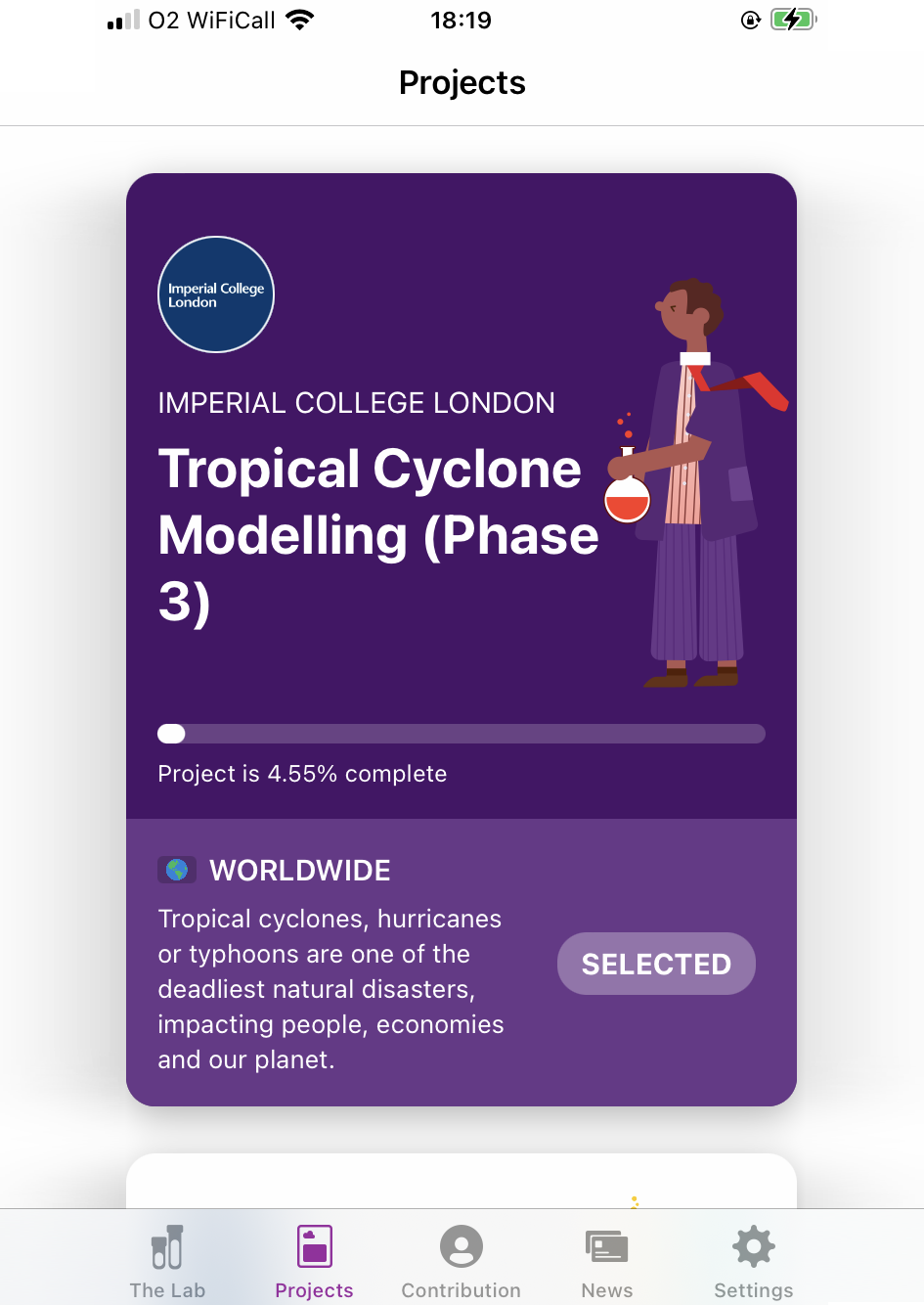Dataset / Professor Ralf Toumi
Harnessing the winds of change to supercharge cyclone modelling
Words: Peter Taylor-Whiffen
Context 
Early in 2023, Cyclone Freddy emerged off the coast of Australia and travelled 5,000 miles to Southeast Africa, making it the longest-lasting and most intense tropical cyclone in terms of lifetime energy ever recorded. Along the way, it claimed 1,484 lives. It was just the latest example of climate change rendering cyclones increasingly destructive, as the rise in sea temperatures gives them more heat, energy and water, making for even stronger winds and even heavier downpours.
Background
Communities are better prepared when they know the probability of a cyclone occurring. However, both observational data and global coarse resolution modelling skills are limited. So an Imperial team, led by Professor Ralf Toumi (Chemistry 1987), Co-Director of Imperial’s Grantham Institute – Climate Change and the Environment, has developed the Imperial College Storm Model (IRIS) to create synthetic cyclones. They teamed up with Vodafone to run it on DreamLab – an app that combines phones into one giant computer processor – and model millions of tropical cyclones globally.
Methodology
Vodafone’s app, previously used to analyse data on COVID-19 and cancer research, harnesses the processing power of idle smartphones that are signed up to the programme, tapping into the phones’ processors while they’re charging to create a network of devices and create a virtual supercomputer, capable of processing billions of calculations. “IRIS works out the probability and likely intensity of a cyclone at any time anywhere in the world,” says Toumi. “IRIS creates millions of tracks and landfalls of cyclones. We build algorithms based on historical observations but also informed by our physics understanding – for instance, knowing the sea surface temperature enables you to forecast the potential maximum intensity and then the decay towards landfall. And phone users need to do nothing except charge their phones."
Results

As well as creating an enormous database and rolling record of the impact of climate change, the phone mega-power database has also advanced our understanding. “Historically, modellers have taken an end-to-end approach, saying: ‘We need to predict the genesis of the storm and the location of where it’s born,’” says Toumi. “From there we’d predict the track, and then where it intensifies, decays and makes landfall. Our results have confirmed that we can predict landfall much better just by simulating the last leg from maximum intensity to decay. We were very encouraged that we could simplify the problem and create a higher quality of result.” And while the concept of synthetic cyclone modelling is not new – such tools are used regularly in the insurance industry – unlike most commercial ventures, Imperial’s work is open source. “There are many interested in this type of information: countries, cities, individuals and businesses. To have the widest possible impact, we can’t be proprietorial,” says Toumi. “We need to be completely transparent about the data and how we have processed it.”
Outcome
This research has a range of applications for the benefit of countries and communities devastated by cyclones. It can, says Toumi, open up conversations on loss and damage – for example, if a nation suffers a stronger cyclone that formed because of atmospheric conditions caused by global warming in another country. “But it also informs how much you spend on climate adaptation,” he adds, “such as sea defences, how strong you make the walls, or whether you invest in mangroves, for instance. You can say: ‘If the intensity will be ten per cent stronger, then the damage will perhaps be 20 per cent greater over a greater area. If that probability is significant then I should spend X on defences – but if it’s only a little change, I’ll build a hospital instead.’”
Professor Ralf Toumi is Co-Director of the Grantham Institute – Climate Change and the Environment. Visit the Grantham webpages to learn more.


